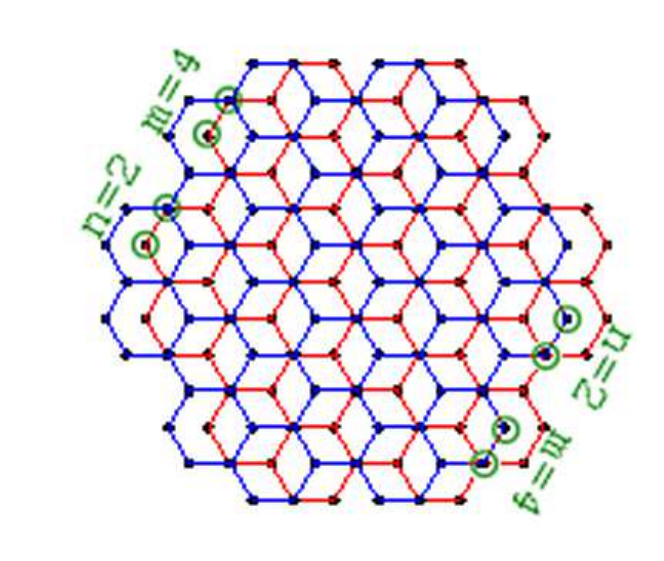Carbon, Avogadro’s Constant and the Importance of the Number 12
The International System of Units (with the abbreviation of SI units) is one of the foundations of modern science. It consists of seven base units from which all others can be derived.

These are the meter for length; the kilogram for mass; the second for time; the ampere for electric current; Kelvin for thermodynamic temperature; candela for luminous intensity, and mole for the amount of substance. This is a coӧrdinated system of units that allows scientific results to be compared relatively easily, regardless of where they are made.
However, the SI system is far from perfect. One of the problems is that some of the units have values based on arbitrary objects, such as the kilogram. There is general agreement that this should be changed so that the units are based on the fundamental constants of nature and on specific numbers that are defined and therefore constant.
One of these numbers is Avogadro’s constant. This is currently defined as the number of atoms in 12 grams of carbon-12 and is known to be about 6.02214129 ×10^23. But the exact number depends on the definition of a kilogram, which for the moment is the mass of an arbitrary bar of platinum-iridium alloy hidden in a safe somewhere in Paris.
The general consensus is that it would be better to define Avogadro’s constant and let this determine the mass of the kilogram. But what number should serve?
Today Phil Fraundorf from the University of Missouri-St Louis puts forward an interesting suggestion. He says that a practical solution is to choose a number that is divisible by 12 so that a whole number of carbon-12 atoms are equal to the mass of a gram, at least to a first approximation.
At the same time, it would be useful to have a physically meaningful definition based on a structure that might reasonably exist in nature. Various researchers have suggested a cube of silicon in diamond face-centered-cubic crystals or a cube of face-centered-cubic carbon.
The problem is that these structures are almost impossible to fabricate and in any case do not contain a number of atoms that is divisible by 12.
So Fraundorf has come up with a better idea based on graphene, single sheets of carbon “chicken-wire” that are currently the focus of intense research. His idea is to define Avogadro’s constant in terms of a number of hexagonal sheets of graphite piled on top of each other to form a hexagonal prism.
He shows that if the number of layers is equal to the number of atoms along one side of the hexagon base, then such a structure will always have a number of atoms that is divisible by 12, exactly as required. So it is simply a question of picking a number that produces a prism with the number of atoms close to the current value of Avogadro’s constant.
He suggests that if this number—the number of layers and the number of atoms along each hexagonal edge—was equal to 51,150,060, then the total would be 602,214,158,510,196,804,982,800 atoms. That’s as near as dammit equal to the current number.
He says that a crystal of carbon created in this way would be 1.71 centimeters tall with each of the six sides measuring 1.09 centimeters long.
That’s an interesting idea, not least because our ability to manipulate graphene is improving in leaps and bounds. Fraundorf imagines a time in the not too distant future when it might be possible to use 3-D printing technology to construct a prism with exactly Avogadro’s number of atoms.
That would be a fascinating object and something that would give people a concrete idea of the space taken up by a mole of matter as well as the weight of a mole of carbon. “The weight of a mole of other atoms will be proportionally heavier or lighter according to the ratio between atomic weights,” he says.
And instead of there being just one kilogram in a vault in Paris (and a few copies elsewhere), anybody could print out their own kilogram anywhere on the planet (in principle, at least).
Of course, the debate is ongoing, with other suggestions under consideration. But Fraundorf’s idea seems eminently sensible and certainly worth more detailed study.
Ref: arxiv.org/abs/1201.5537: A Multiple Of 12 For Avogadro
Keep Reading
Most Popular
Large language models can do jaw-dropping things. But nobody knows exactly why.
And that's a problem. Figuring it out is one of the biggest scientific puzzles of our time and a crucial step towards controlling more powerful future models.
The problem with plug-in hybrids? Their drivers.
Plug-in hybrids are often sold as a transition to EVs, but new data from Europe shows we’re still underestimating the emissions they produce.
Google DeepMind’s new generative model makes Super Mario–like games from scratch
Genie learns how to control games by watching hours and hours of video. It could help train next-gen robots too.
How scientists traced a mysterious covid case back to six toilets
When wastewater surveillance turns into a hunt for a single infected individual, the ethics get tricky.
Stay connected
Get the latest updates from
MIT Technology Review
Discover special offers, top stories, upcoming events, and more.